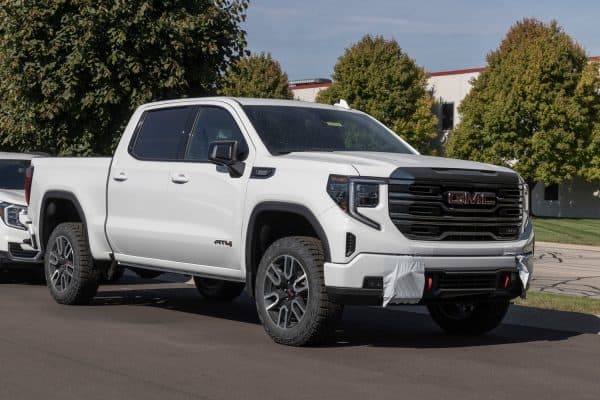Did you replace the brake caliper on your truck? So you need to bleed the brakes, and you want to know if your truck should be running when you bleed the brakes. You’ve come to the right place, for we have researched this question, and we have the answer for you.
No. Your truck should not be running when you bleed the brakes.
Let’s talk more about bleeding brakes in the succeeding sections. Learn how to properly bleed the brakes on your truck in the sections below.
Read on!
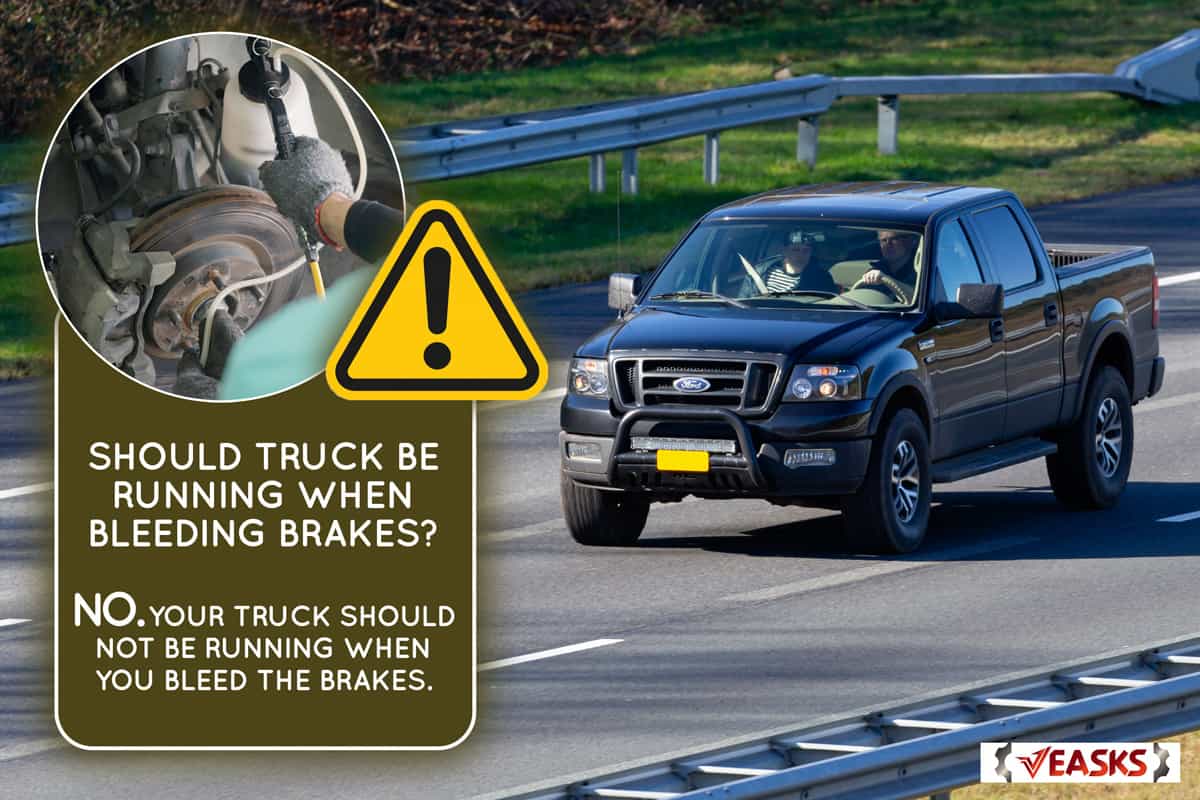
Why do you need to bleed brakes?
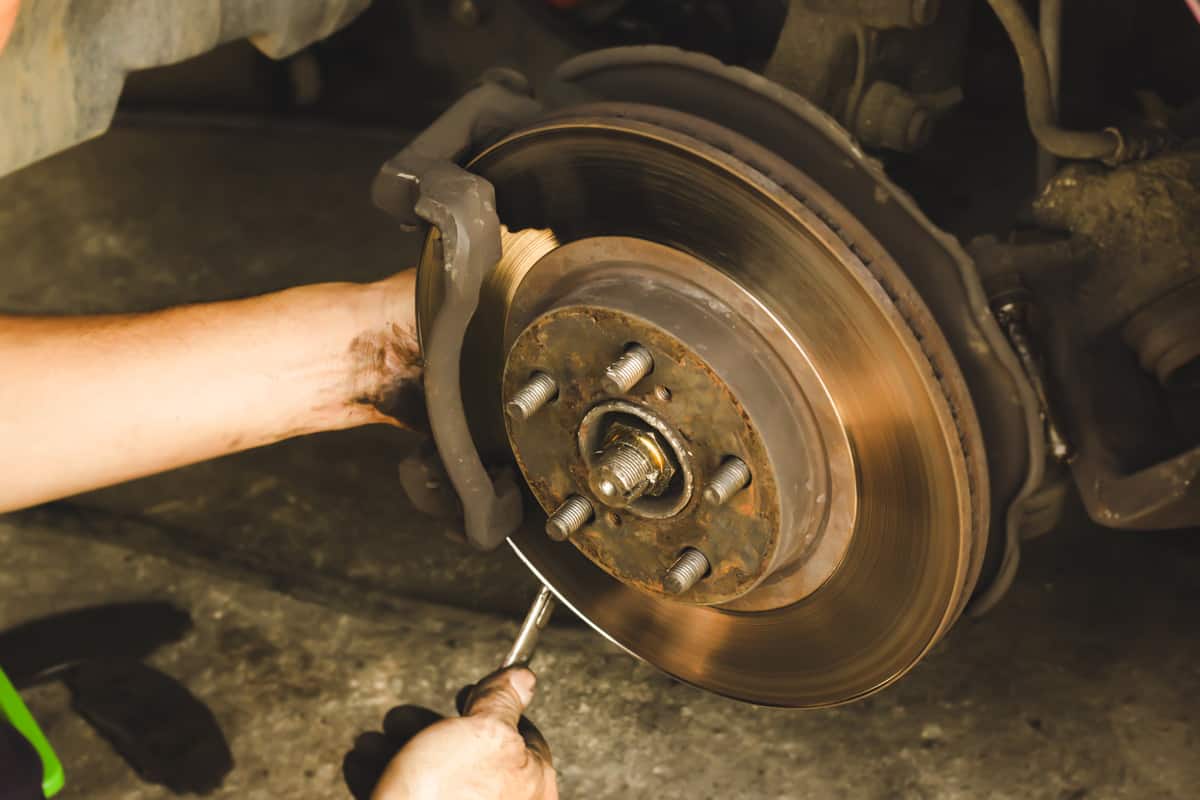
You need to bleed your brakes whenever you replace or upgrade a part of the brakes. When your vehicle reaches 30,000 miles, brake bleeding should be done as part of regular maintenance. Moreover, if your brake pedal starts to feel spongy, it might be time to bleed your brakes.
Bleeding the brakes pushes some of the brake fluid out of the brake system. Flushing the brake fluid will bring with it any air bubbles inside the brake system. Getting rid of air bubbles in the brake system is one of the main reasons why you need to bleed the brakes regularly.
Why it’s bad to have air in the brake system?
The modern vehicle brake system is hydraulic. The force that your foot applies to the brake pedal is multiplied by the vacuum booster that uses the vacuum from the engine. The force from the vacuum booster opens the pistons from the master cylinder to let the brake fluid flow under pressure.
When the brake fluid reaches the brake calipers, the pressure on the brake fluid will push the brake calipers to clamp on the brake rotor. This action slows down your vehicle. The harder you step on the brake pedal, the harder the brake fluid will push the brake calipers, and the tighter the brake calipers will grip the brake rotors.
This process is made possible by the hydraulic fluid inside the brake system of your truck. This hydraulic fluid is more commonly known as the brake fluid. One of the important qualities of hydraulic fluid is that it takes a lot of force to compress it—much more than what the brake system can generate.
In contrast, air is compressible. Air in the brake lines is bad because when you step on the brake pedal, the force that you apply will compress the air first, making your brakes less responsive. Your truck will take a long time before it completely stops.
And this can be a recipe for a fatal accident. One symptom of air in your brake lines is when your brake pedal feels spongy, soft, or unresponsive.
How does air get into the brake lines?
The brake pads and the rotor need to produce friction to stop the movement of your vehicle. The faster your vehicle is going, the more friction they need to generate to stop the vehicle. Similarly, a heavier vehicle or a truck with a heavy load will need more friction to stop.
Friction is heat, and too much heat can cause liquid to boil. When your brake fluid boils, some of it will become vapor or gas. This gas will produce the same problems as air in the brake lines.
The boiling point of brake fluid naturally goes down as it ages.
Thus, it is important to follow the recommendations of your vehicle manufacturer when it comes to what brake fluid to use.
The second way that air can get into the brake lines is when you replace or upgrade brake parts. When you disconnect your brake lines, you expose them to air that can get into the system.
Moreover, brake fluid naturally absorbs water from the environment. Water has a lower boiling point than brake fluid. When the brake fluid heats up, its water content will start to boil and become vapor or gas.
How to bleed brakes?
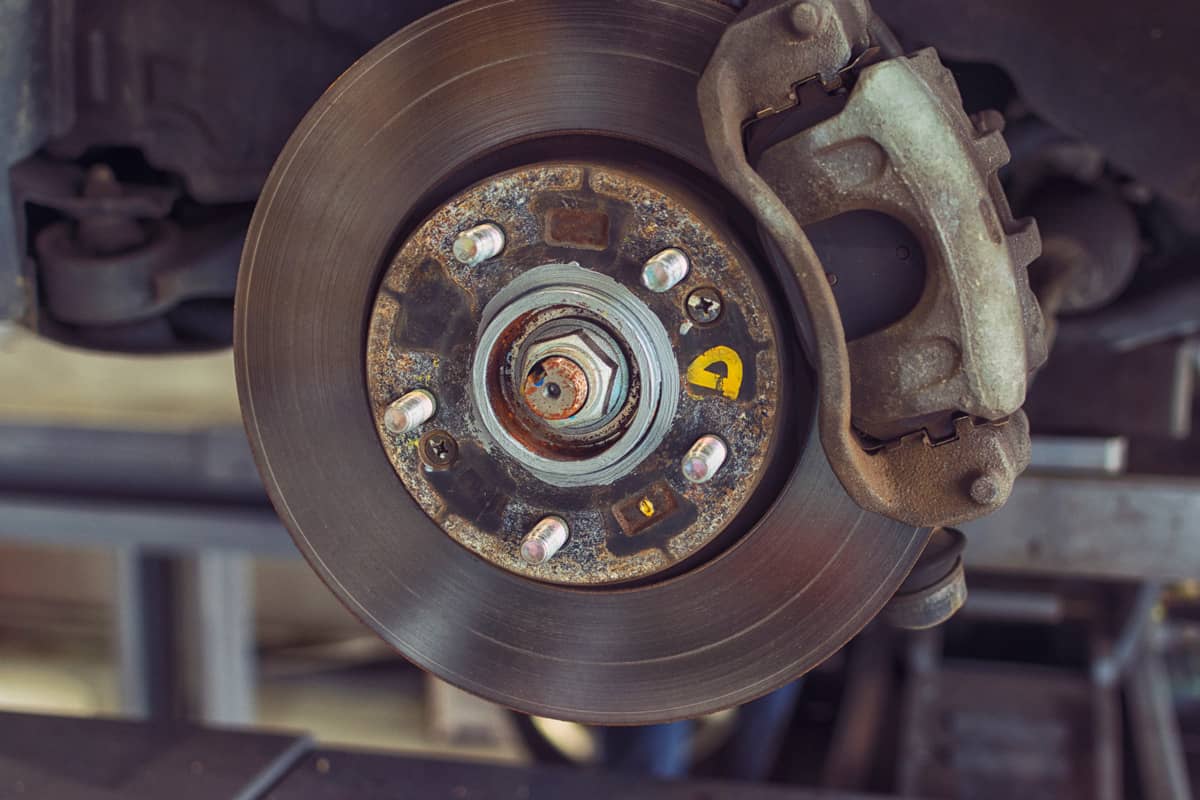
Here are the complete steps on how to bleed the brakes of your truck so that you can do it yourself regularly. You can follow these same steps on any vehicle that you own, not just trucks.
Preparing Your Truck
- Park your truck on even and solid ground.
- Apply the parking brakes and place your truck on “Park(P).”
Removing The Tires
- Loosen the lug nuts of your tires but do not remove them completely.
- Jack your truck up on the correct jacking points.
- Place jack stands under the truck until all four tires are above the ground. Shake your truck to test the stability of your jack stands.
- Remove the lug nuts and remove the tires.


BIG RED T43006 Torin Steel Jack Stands are available on Amazon through this link.
Working On The Brake Fluid Reservoir
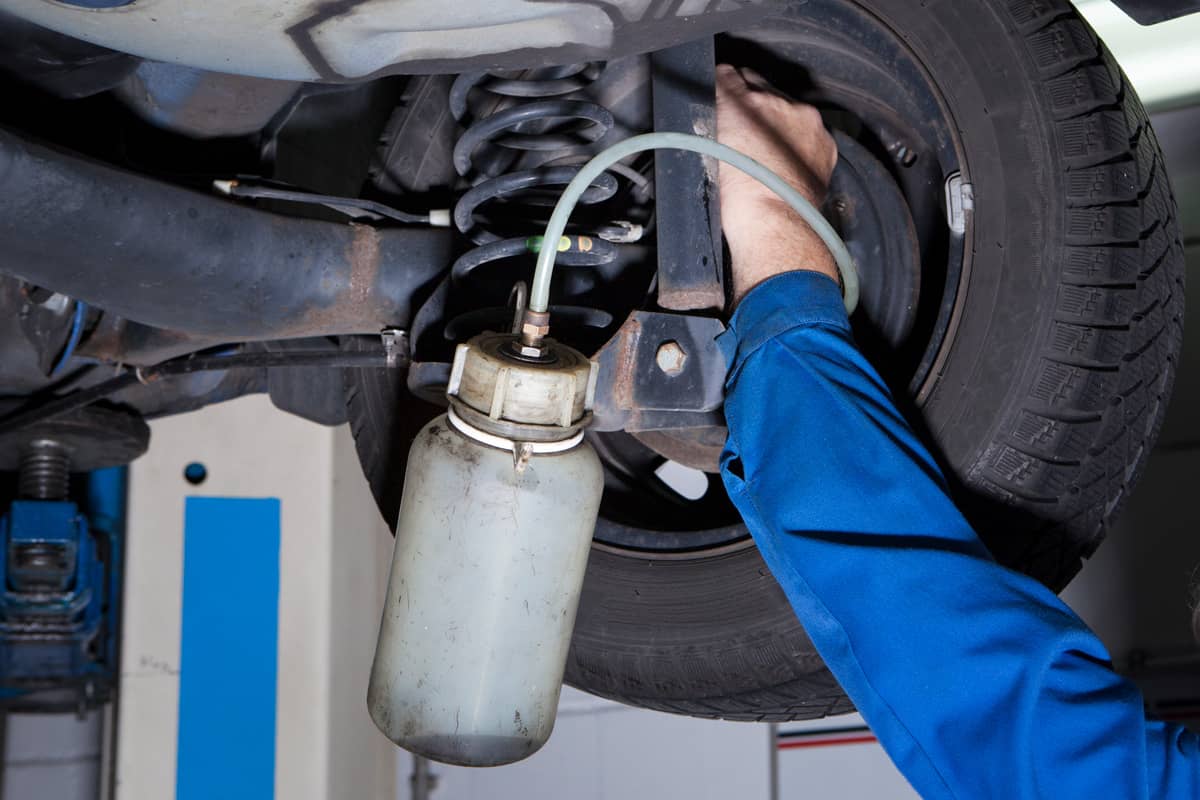
- Open the engine bay and locate the brake fluid reservoir. Consult the user manual of your truck if you cannot find the brake fluid reservoir.
- Place a rag under the brake fluid reservoir to catch any brake fluid. Brake fluid is highly corrosive, do not let it get to parts with paint or parts that will corrode.
- Remove the cover of the brake fluid reservoir and remove the filter.
- Get a clean stirrer and stir the brake fluid inside the reservoir. This will move any solid contaminants to the top. Never use a metal stirrer because the brake fluid can corrode.
- Use a large turkey baster to suck out the old brake fluid. Transfer it to an empty brake fluid bottle.
- Once the reservoir is empty, refill it with new brake fluid.


Zulay Turkey Baster is available on Amazon through this link.


Prestone AS400 DOT 3 Synthetic Brake Fluid is available on Amazon through this link.
Making Your Bleed Tank
- Get a clean, dry empty water bottle. A half-quart capacity should be fine.
- Drill a 3/8 hole on one side of the cap of the water bottle.
- Insert a clear silicon tube into the hole. One end should reach the brake caliper while the other end is at the bottom of the bottle.
- Drill a smaller vent hole on the other side of the bottle cap.
- Fill the water bottle with clean brake fluid to submerge the clear tube.


DERPIPE Clear Vinyl Tubing is available on Amazon through this link.
Bleeding The Brakes
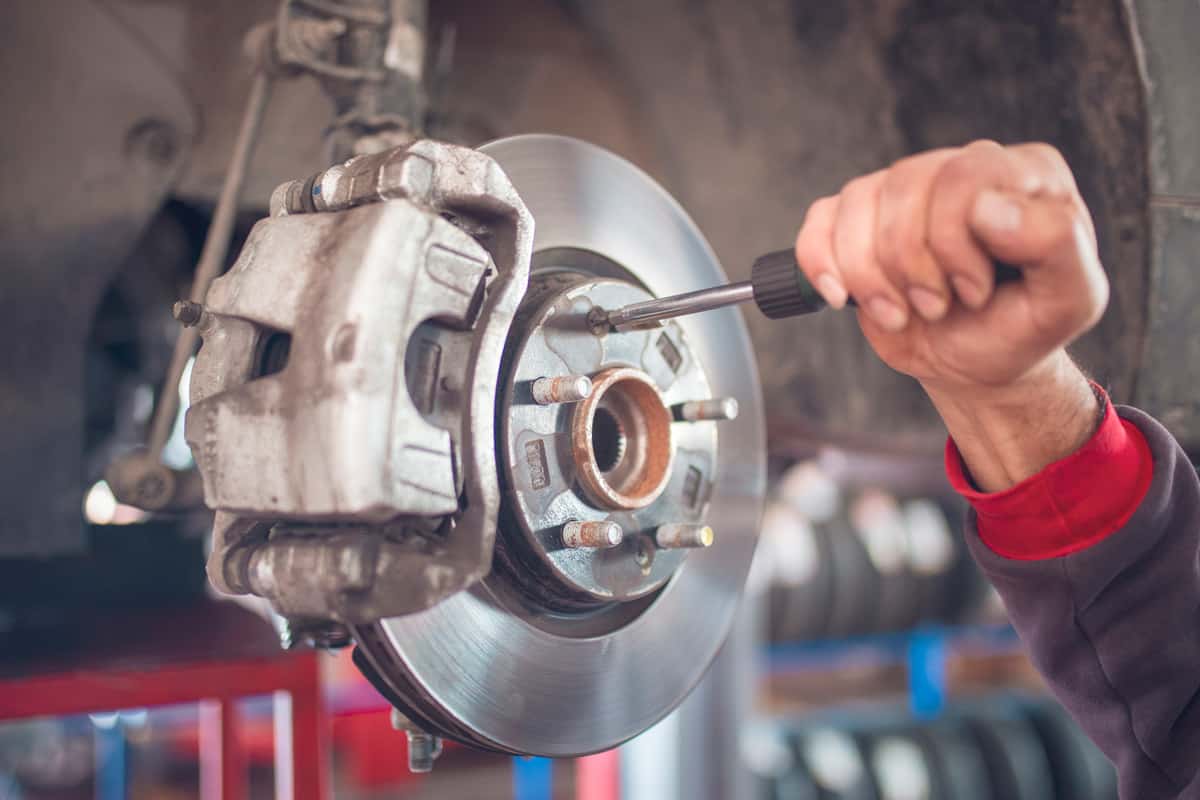
You need to start bleeding the brakes from the brake line that is farthest from the brake fluid reservoir. If you can locate the ABS module on the engine bay, start bleeding from the farthest brake line from there.
If you cannot find the ABS module—because sometimes it can be under your truck—use the brake fluid reservoir as a reference.
Bleeding the brakes in this order minimizes the amount of old brake fluid that will mix with the new brake fluid.
For this guide, we will start from the rear right tire since most brake fluid reservoir is on the driver’s side of the vehicle.
- Locate the bleeder valve somewhere on the brake caliper. It will have a rubber cap.
- Remove the rubber cap and insert the bleeder valve into the clear tube of the bleed tank.
- Open the valve using a wrench.
- Have someone go inside your truck
- Have that friend slowly press the brake pedal.
- Once they reach the bottom of the brake pedal, slowly release the brake pedal. Monitor the tube and the bleed tank. Make sure that the tank doesn’t tip over.
- Repeat Steps 5 and 6 until the fluid coming out of the tube is clear.
- Tighten the valve nut and disconnect the tube from the bleeder valve.
- Clean the bleeder valve and reinstall the rubber cover.
- Refill the brake fluid tank with fresh brake fluid.
- Empty the bleed tank and pour in some fresh brake fluid to submerge the tube just like before.
- Move to the rear left tire and repeat the same steps until you get a clear fluid coming out of the bleed valve.
- Repeat the same steps on the front right side, then on the front left side.
Finishing Up
- Reinstall the tires and lug nuts.
- Lower your truck and torque the lug nuts according to your truck’s manufacturer’s recommendations.
- Bring the old brake fluid to a nearby recycling center or automotive shop. Never dump it into the drain. This is illegal in some states.
Conclusion
Your truck should not be running when you bleed the brakes. The process forces air out of the hydraulic braking system, ensuring that your truck's response is immediate when you step on the brake pedal.
If you enjoyed reading this article, you might find the articles below equally enjoyable to read:


![Portrait of middle aged bearded truck driver standing by the truck and showing his commercial driver license. Focus on CDL license. Truck driving school and job openings, Do You Need A CDL To Drive A Box Truck [By State]](https://veasks.com/wp-content/uploads/2022/11/PORTRA1-600x400.jpg)
